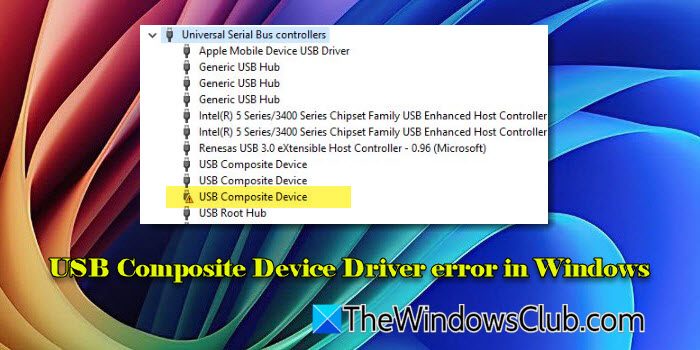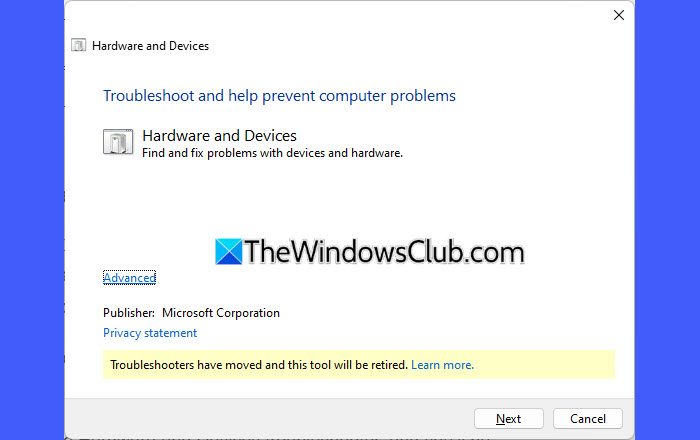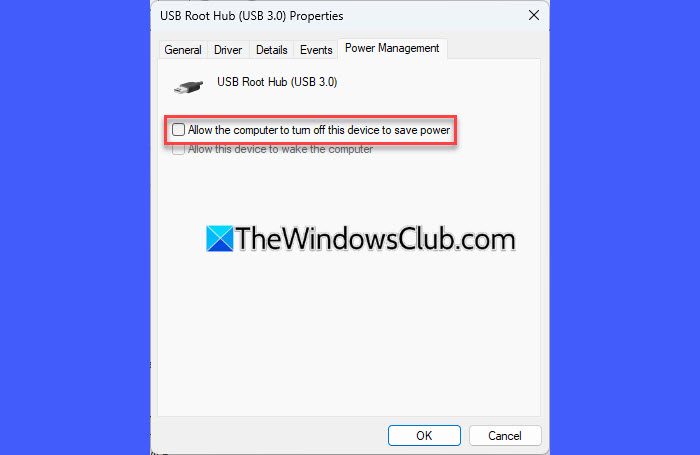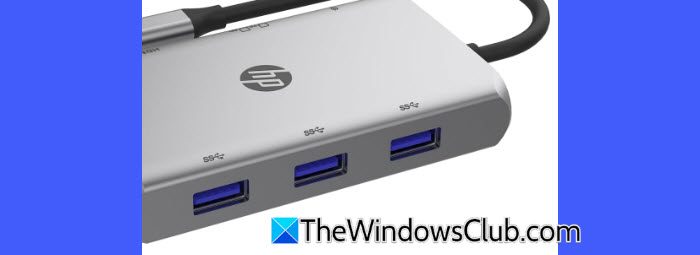In this post, we will show you how to fix USB Composite Device Driver error in Windows 11. If you see a yellow exclamation mark next to the USB Composite Device entry in Device Manager, it means Windows has detected an issue with the device, likely indicating a problem with the driver that enables communication between the device and your computer’s operating system.

What is a USB composite device in Windows 11?
In Windows 11, a USB composite device refers to a USB device that performs multiple functions using a single connection. For example, a printer that also scans and faxes but uses only one USB port to connect to the computer. These devices allow multiple functions to operate through a single connection, conserving USB ports while enabling the OS to handle each function independently.
Causes of the USB Composite Device Driver error
The USB Composite Device Driver error often arises from outdated or incompatible drivers, especially when an older device is connected to a modern USB 3.0 port. Additionally, power management settings, Windows updates, or corrupted driver installations may prevent the system from properly recognizing the device, leading to errors.
Fix USB Composite Device Driver error
To fix USB Composite Device Driver error on your Windows 11/10 PC, use these fixes:
- Run Hardware and Devices troubleshooter
- Update USB Composite Device driver
- Uninstall and Reinstall USB Composite Device Driver
- Change USB Port Settings
- Use a USB 2.0 Port
Let us see this in detail.
1] Run Hardware and Devices troubleshooter

The Hardware and Devices troubleshooter is not directly available in Windows 11 settings, since Microsoft has gradually phased out some built-in troubleshooters, but you can still access it via a command prompt.
Press Win + R on your keyboard. In the Run dialog, type msdt.exe -id DeviceDiagnostic and press Enter.
The command will initiate the Hardware and Devices troubleshooter, which will guide you through a series of prompts. After the troubleshooter completes its assessment, it will present you with a summary of detected issues and possible fixes. Apply the suggested fixes, reconnect the USB composite device, and see if the error is resolved.
Related: USB Composite Device is an older USB device and might not work with USB 3.0
2] Update USB Composite Device driver

Driver updates provide the latest bug fixes and compatibility improvements, ensuring your device functions correctly within the Windows environment.
Right-click on the Start button and select Device Manager. Expand the Universal Serial Bus controllers section. Find USB Composite Device, right-click on it, and choose Update driver. Next, select Search automatically for updated driver software.
Windows will scan your system and the internet for the latest driver updates. If a newer driver is found, it will be downloaded and installed automatically.
If this doesn’t work, try other methods of updating drivers, such as using Windows Update or manually downloading and installing latest drivers from the manufacturer’s website.
3] Uninstall and Reinstall USB Composite Device Driver

Uninstalling the driver removes any corrupted or outdated driver files, allowing Windows to reinstall a fresh version. This process can restore proper functionality to the device, fix communication problems, and ensure that the latest compatible driver is being used, possibly fixing the error you are experiencing.
In Device Manager, locate USB Composite Device. Right-click on it and choose Uninstall device. Once uninstalled, unplug the USB device and restart your PC.
After the reboot, plug the device back in, and Windows should reinstall the necessary drivers.
4] Change USB Port Settings

Power-saving settings in Windows can turn off the USB Composite Device when it’s not actively in use, leading to intermittent connectivity issues. Adjusting settings such as disabling USB selective suspend or changing the power management options in Device Manager can enhance power supply to the USB ports and improve device detection.
Open Device Manager and expand Universal Serial Bus controllers. Right-click on USB Root Hub (USB 3.0) and select Properties.
In the USB Root Hub Properties window, go to the Power Management tab and uncheck ‘Allow the computer to turn off this device to save power’. Click OK to apply the changes.
This action prevents Windows from automatically disabling the USB Composite Device to save power. Once you have made this change, reboot your PC and see if the system recognizes the device properly.
5] Use a USB 2.0 Port

Although USB 3.0 ports are generally backward compatible with older USB standards (like USB 2.0 or 1.1), certain older devices, especially USB Composite Devices, might not function properly when connected to USB 3.0 ports.
If your computer has both USB 3.0 and USB 2.0 ports, try connecting the USB composite device to a USB 2.0 port. This often resolves issues related to backward compatibility. A powered USB hub can also ensure that devices receive sufficient power, especially if they require more energy than standard ports can supply.
I hope this helps.
Read: Fix Power surge on the USB port error on Windows.
How do I fix USB driver error in Windows 11?
To fix the USB driver error in Windows 11, locate the USB device with the error (often marked with a yellow exclamation mark) in Device Manager, right-click on it, and choose Update driver. If updating doesn’t work, try uninstalling the device, then restart your computer to reinstall the driver automatically. If issues persist, connect the device to a different USB port or use a powered USB hub to ensure adequate power supply.
Read Next: How to enable USB-C charging on laptop in Windows.